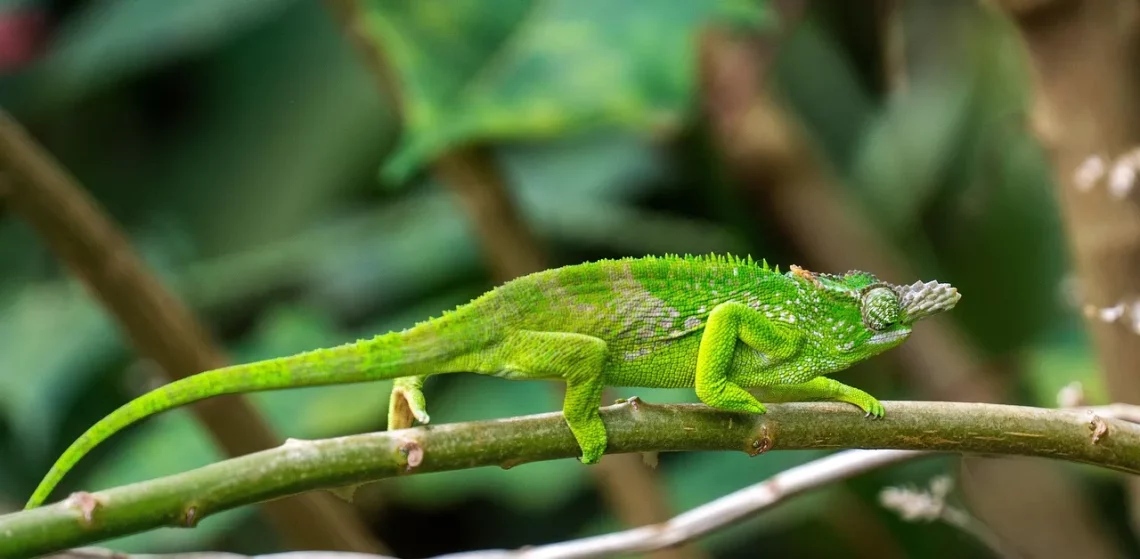
Essential Guide to Veiled Chameleon Diet for Optimal Health
When it comes to keeping a veiled chameleon as a pet, understanding its dietary needs is crucial for ensuring optimal health and longevity. These fascinating reptiles are not only known for their vibrant colors and ability to change hues, but they also have specific nutritional requirements that must be met to maintain their well-being. In the wild, veiled chameleons are insectivorous, feeding on a variety of insects, but their diet can be more complex in captivity.
A well-balanced diet for a veiled chameleon goes beyond simply offering a few crickets or mealworms. It involves a careful selection of food items that provide the necessary vitamins, minerals, and hydration needed for a thriving chameleon. Moreover, understanding factors like age, size, and overall health can significantly influence dietary choices. Proper nutrition plays a fundamental role in preventing common health issues, enhancing the chameleon’s natural behaviors, and ensuring vibrant coloration. Therefore, it is essential for chameleon owners to educate themselves about the right food choices and feeding practices to create a suitable environment for their pet’s growth and vitality.
Understanding the Nutritional Needs of Veiled Chameleons
The nutritional requirements of veiled chameleons are multifaceted and must be understood to provide a balanced diet. These reptiles require a diverse range of nutrients, including proteins, fats, vitamins, and minerals. In their natural habitat, veiled chameleons consume a variety of insects, which provide essential proteins and fats necessary for their growth and development.
Proteins are crucial as they help in muscle development and overall health. Common sources of protein for captive veiled chameleons include crickets, roaches, and silkworms. These insects should be gut-loaded before being offered to the chameleon, meaning they should be fed nutritious foods themselves, enabling them to pass on those nutrients. This practice ensures that the chameleon receives not just the protein but also the vitamins and minerals that are vital for its health.
Fats are also an important part of a veiled chameleon’s diet but should be offered in moderation. Some insects, like waxworms, are high in fat and can be included occasionally as a treat. However, a diet too high in fats can lead to obesity and other health issues.
Vitamins and minerals play a significant role in the chameleon’s diet as well. Calcium is particularly important for bone health and should be supplemented regularly. Vitamin D3 is also necessary, especially for chameleons kept indoors, as it helps with calcium absorption. A deficiency in these nutrients can lead to metabolic bone disease, a serious health concern for reptiles. Therefore, it’s vital to dust their food with calcium and vitamin supplements to ensure that they receive adequate nutrition.
Lastly, hydration is often overlooked but is just as essential as solid food. Veiled chameleons absorb water through their skin and can also drink droplets from leaves. Regular misting of their habitat and providing a water source are important practices to ensure they remain hydrated.
Feeding Practices for Captive Veiled Chameleons
Feeding practices significantly impact a veiled chameleon’s health and well-being. Establishing a feeding routine is essential for both the owner and the chameleon. It’s important to consider the age, size, and health of the chameleon when determining feeding frequency and portion sizes.
Juvenile chameleons typically require more frequent feedings than adults, as they are in a growth phase. A juvenile veiled chameleon may need to be fed every day, while adults can often be fed every other day. It is crucial to monitor their body condition and adjust feeding frequency accordingly. Overfeeding can lead to obesity, while underfeeding can result in malnutrition.
The size of the insects offered should also be appropriate for the chameleon’s size. A good rule of thumb is to provide insects that are no larger than the width of the chameleon’s head. This prevents choking and ensures that the chameleon can adequately capture its prey.
Variety is key when it comes to feeding. Offering a range of insects ensures a broader spectrum of nutrients. In addition to crickets and roaches, chameleons can also benefit from other insects like fruit flies, moths, and hornworms. Each insect has its own unique nutritional profile, so mixing them up can help prevent deficiencies.
Furthermore, it’s vital to create a stress-free feeding environment. Chameleons are naturally solitary creatures and can become stressed in chaotic conditions. Providing a calm atmosphere during feeding times encourages natural hunting behaviors, which is beneficial for their mental health.
Additionally, owners should consider the temperature and humidity levels in the habitat. Proper environmental conditions help facilitate digestion and overall health. A temperature gradient allows the chameleon to thermoregulate, which is essential for metabolic processes, including digestion.
Common Mistakes in Chameleon Nutrition
Despite the best intentions, many chameleon owners make common mistakes when it comes to their pet’s diet. Understanding these pitfalls can help ensure that veiled chameleons receive the best possible care.
One frequent mistake involves offering a limited diet. Relying solely on one type of insect, like crickets, can lead to nutritional deficiencies over time. Chameleons thrive on a varied diet that includes different types of insects and occasional fruits or vegetables as treats. It is crucial to diversify their menu to cover all nutritional bases.
Another common error is the improper use of supplements. While calcium and vitamin D3 are essential, over-supplementing can be just as harmful as under-supplementing. It’s important to follow guidelines and recommendations for the correct amounts and frequency of supplementation. Regularly dusting insects with calcium powder but not overdoing it is a good practice.
Hydration is often neglected in chameleon care. Many owners assume that their pets get enough water from the insects they consume. However, providing a water source through misting or a small dripper is essential. Dehydration can lead to serious health issues, including organ failure.
Additionally, feeding insects that are wild-caught can pose risks. Wild insects can carry parasites or pesticides that are harmful to chameleons. It’s always safer to purchase feeder insects from reputable sources to ensure they are healthy and free from contaminants.
Lastly, many owners may not notice behavioral changes in their chameleons that indicate health issues related to diet. Symptoms like lethargy, discoloration, or lack of appetite can signal dietary deficiencies or health problems. Regular observation and understanding normal behaviors are crucial in identifying potential issues early.
As a reminder, this article is not intended as medical advice. If you have health concerns about your pet, consult a veterinarian who specializes in reptiles for professional guidance. Proper care and attention to diet can greatly enhance the life of your veiled chameleon, ensuring it remains a vibrant and active member of your household.




